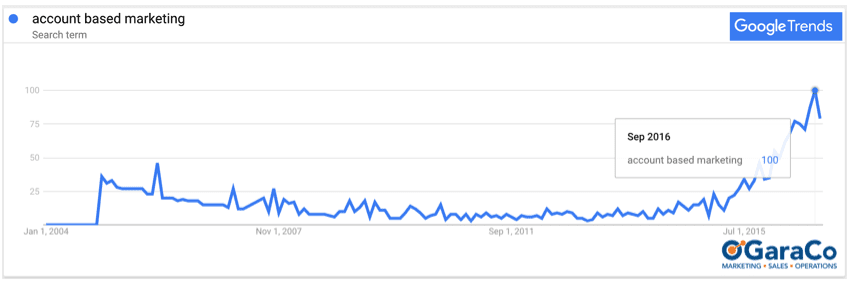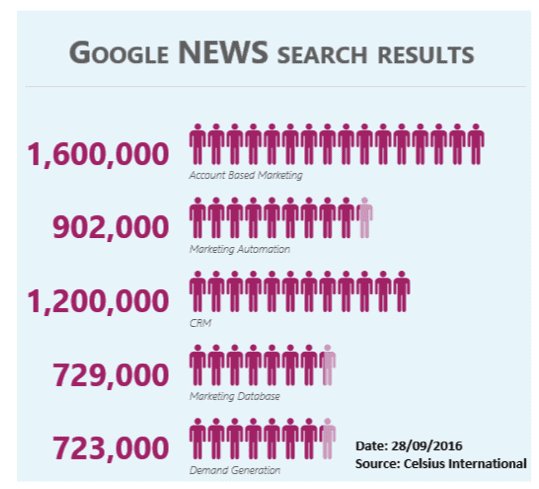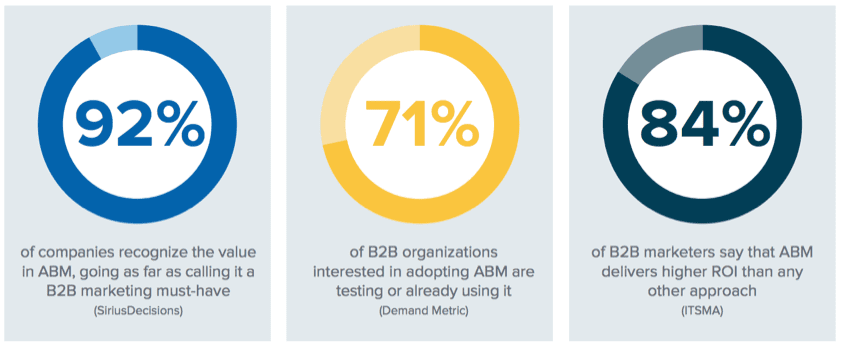The essential strategies you need to successfully win major B2B customers.
Although the phrase has been around for over a decade and arguably being deployed by smart marketers ever since B2B sales teams have focused on target/key accounts, in recent years account-based marketing (ABM) has become hotter than ever.
As far back as 1993, Peppers and Rogers proposed marketing would take an increased role in developing intelligence on key accounts: “When two marketers are competing for the same customer’s business, all other things being equal, the marketer with the greatest scope of information about that particular customer... will be the more efficient competitor.”[1]
In short, ABM is a strategic approach that coordinates personalised sales and marketing efforts, to target specific accounts for new business and create deeper and broader relationships with existing customers.[2]
It’s clear to see from Google Trends, the term account-based marketing, was being searched since the Information Technology Services Marketing Association (ITSMA) first coined the phrase, just over 10 years ago.
Since then, it’s more than trebled in popularity or become ten times more popular in the past two years, than its average popularity over time. This is due to several key drivers, which we discuss later.
Bev Burgess, European MD of ITSMA, is famed for coining the phrase account-based marketing and co-creating the approach with organisations like Fujitsu, BT, HP, and Accenture.
Organisations seeing the greatest current benefit from ABM are typically IT, Services and Consulting companies. Due to their complex propositions, long sales cycles and large clients, these organizations are ideal candidates for ABM. It is spreading into other sectors and a benefit can be seen to be an increased return on time (ROT).[3]
If we also take a look at it’s popularity in the news, compared to other popular marketing topics, we see ABM is 40% more popular than CRM and almost twice as popular as marketing automation.
Why the recent popularity? The business world has changed dramatically in the past 10 years, especially sales and marketing tactics, strategies and technologies.
The Evolution of ABM
Historically, ABM was arguably a strategy only used by the largest of marketing teams. After all, who else would have the resources to focus large marketing efforts on a few accounts. However, due to advances in technologies and services, ABM can now scale. Enabled by the latest advances in mass-personalisation, retargeting and programmatic account-based advertising, to name a few, it’s now possible to treat an individual company as a market of one — targeted with personalised messages to suit their individual needs.
ABM, in its newest form, finds the right balance between inbound and outbound marketing, online and offline — to create an integrated campaign approach. All focused on the buying committee in the complex B2B buyer and the customer journey.
The benefits of ABM
There are many benefits claimed with the use of ABM. Some examples are:
- Better use of marketing resources by focusing on a smaller number of accounts
- More personalized, efficient marketing strategy; creating stronger engagement with prospects
- Optimising upsell and cross-sell with customers
- The ability to close bigger deals within targeted accounts
- Creating a more targeted approach to nurturing
- The ability to increase pipeline velocity, or to close deals faster
- Utilising data for intelligence and smarter targeting
- Aligning your marketing, sales and services teams to focus on the most lucrative clients and prospects
Recent research shows ABM to be a ‘must have’, with the majority of companies testing or using the strategy with claims it delivers a higher ROI than any other approach.
In partnership with SmartInsights, OGaraCo have created ‘The definitive guide to account-based marketing and sales alignment’. In this briefing, we look beyond the hype to uncover a universal definition as well as who should be using it, when and how — from development to deployment — including case studies and best practice for planning and execution. We take a balanced and unbiased approach to examining all the evidence and set a clear framework for you to implement ABM, if it’s relevant to your business. Expert members can download our guide to account based marketing today.
[1] Peppers and Rogers; The One-to-One Future (1993); Page 140
[2] OGaraCo definition of ABM, 2016, www.ogaraco.com
source http://www.smartinsights.com/b2b-digital-marketing/introduction-account-based-marketing-sales-alignment/



No comments:
Post a Comment